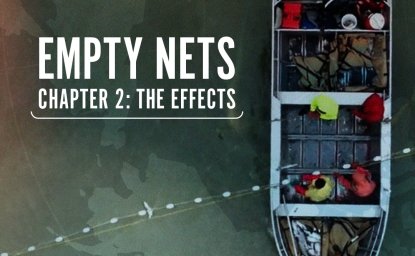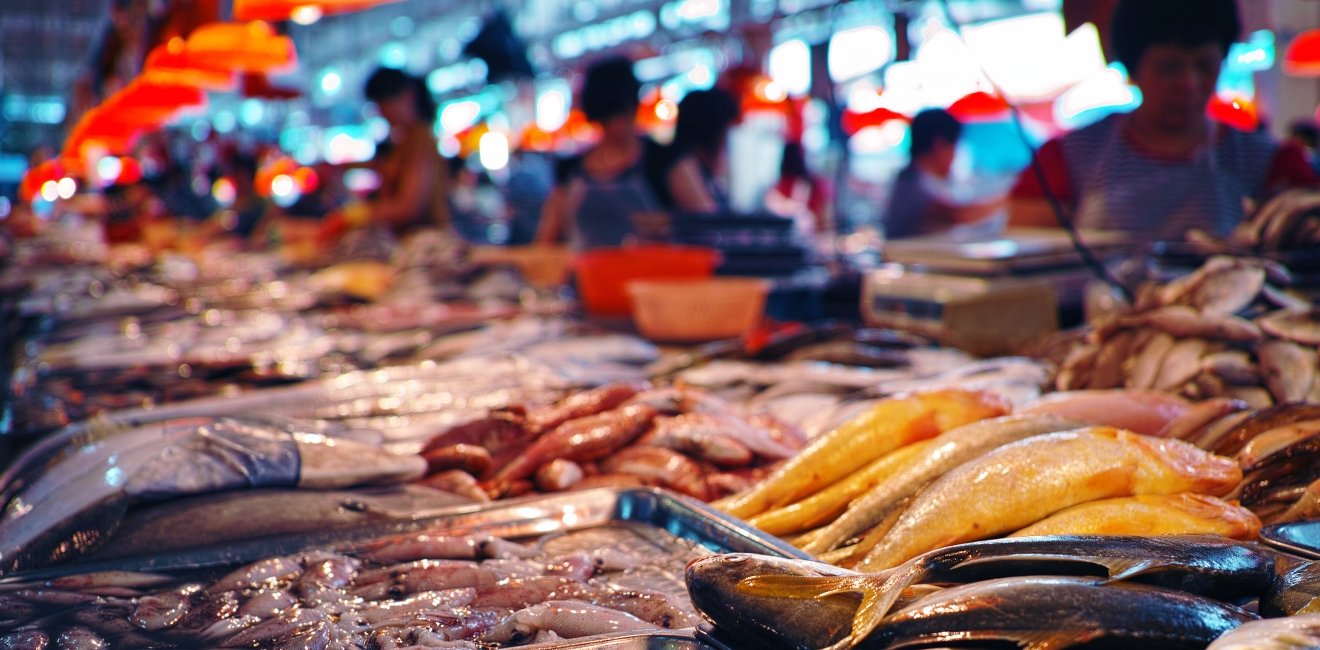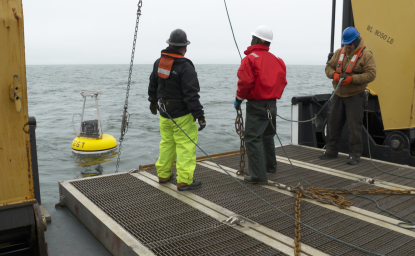I. Introduction
According to the World Bank, “the Blue Economy is sustainable use of ocean resources for economic growth, improved livelihoods, and ocean ecosystem health.”[1] While the ocean economy represents all economic activity that makes use of ocean resources, the Blue Economy is a narrower subset of ocean economic activities that are sustainable and/or regenerative. While the concepts of ‘sustainable’ and ‘regenerative’ are not precisely defined and disagreements persist about their boundaries, a thorough discussion of these terms is beyond the scope of this policy brief. For an activity to be considered part of the Blue Economy, a credible case must be made that it helps mitigate climate change, helps communities adapt to coastal climate impacts, or plays a role in promoting/restoring marine ecosystem health and resilience; and if the activity requires resource extraction from the ocean it must be done in a manner that does not degrade marine ecosystems or threatened species.
Given this definition, it is clear that a large portion of industrial (and other commercial) fishing activity as currently practiced does not meet the standards of the Blue Economy; many species are currently fished at unsustainable rates, marine ecosystems are being degraded, threatened species are being negatively impacted, and the climate footprint of much of the industry (once all transport, refrigeration, and processing are tallied) is high relative to protein generated from lower trophic level sources.[2]
Therefore, there is tremendous opportunity for global seafood production that is truly “blue” and can provide sustainable protein for a growing population without the myriad negative externalities of industrial fishing. The remainder of this brief will outline the three sectors that can meet this challenge: sustainable aquaculture, cultivated seafood, and plant-based seafood alternatives, followed by a short discussion of the policy responses required to accelerate this transition.
II. Sustainable Aquaculture
In many environmental and marine conservation circles aquaculture is viewed unfavorably because of the many negative impacts associated with large fin-fish marine aquaculture systems, which include increased disease, potential escape of genetically modified fish species, lower quality product, and most importantly, the high feed to conversion ratios which require more than a pound of wild caught fish to produce a pound of farm raised product.[3] While this skepticism towards aquaculture is warranted, aquaculture operations currently produce more than 50% of all the seafood that is consumed globally, and given that we are already overfishing many wild species, aquaculture is likely to grow even more in the coming decades due to the rising demand for seafood.[4]
It is therefore necessary to promote sustainable aquaculture so that as the industry expands its environmental footprint can be minimized with efficient systems that have the potential to restore marine ecosystems and provide not only seafood but other sustainable materials.
Two of the most promising forms of sustainable aquaculture produce sea vegetables and shellfish, both of which can purify ocean water, help mitigate local ocean acidification, provide critical habitat for marine life, require minimal inputs and energy, grow rapidly, and can provide materials as varied as biofuels, industrial chemicals, and reef building materials (e.g., used shells from oysters, mussels, and clams).[5] Humans have been growing seaweeds and shellfish for centuries, most notably throughout Asia, but as their benefits have become clearer, entrepreneurs around the world are beginning to show renewed interest. There are very few such operations in the US, but in the past decade companies have established new projects in Maine, Southern California, and Florida, and many state and local governments, as well as environmental NGOs, are bullish about future prospects.[6]
Mike Graham, a professor of phytology at Moss Landing Marine Laboratories (MLML) in Central California, and president of the California Aquaculture Association, is a strong proponent of sustainable seaculture technologies. He owns an aquaculture business—Monterey Bay Seaweeds—that grows seaweeds and abalone in tanks on land with water siphoned from the Monterey Bay and specializes in high-end varieties for restaurants and chefs. His systems use almost no energy, thereby producing almost no greenhouse gases, and the water that leaves his tanks is cleaner when it reenters the bay than when he extracted it. He is in the process of setting up a Center for Sustainable Aquaculture within the California State University system and he currently leads the aquaculture program at MLML.
Land-based mariculture systems, such as Dr. Graham’s, can exist at the interface of the land and ocean (e.g., in estuaries), in completely freshwater systems, or in constructed tanks and ponds. One of the most impressive largescale land-based systems, popularized by chef Dan Barber in his 2010 Ted Talk, is the Veta La Palma aquaculture facility in Southern Spain. Using a complex system of canals and irrigation systems over 8,000 acres, the facility produces large quantities of fish with no inputs at all. The project instead relies on the health of the ecosystem to sustain both the commercial species and the other biodiversity that are both predator and prey in a unique balance that is economically profitable.
Both low trophic level systems that produce vegetables and/or shellfish and ecological finfish systems that don’t require wild fish feed, provide great potential for seafood production that does not exacerbate the unsustainable practices endemic to the commercial fishing industry.
III. Cultivated Seafood
Cultivated meat and seafood (also referred to as cell-cultured or cell-cultivated) uses samples of tissue from animals to reproduce these cells at scale in industrial facilities to produce meat that is identical to the animals from which they are sampled.[7] The process doesn’t involve slaughtering animals, or in the case of most fin-fish aquaculture, feeding them in a highly inefficient manner. Most of the media attention around this new technology has focused on cultivated beef and chicken, but there is equal potential to produce cultivated seafood, including the highly prized and threatened bluefin tuna.
Two companies, Finless Foods and Blue Nalu, are developing cultivated bluefin tuna that is soon expected to be price competitive with wild caught tuna. Finless Foods plans to launch its cultivated product in 2022 and is also working on a plant-based version (more on this below), along with other cultivated species. Although this new industry doesn’t operate in the ocean it utilizes ocean genetic resources, it derives feed for the cultures from ocean vegetation, and it has the potential to relieve pressure on wild capture species; therefore, it should be considered part of the Blue Economy. If successful, cultivated seafood could end decades of unsustainable practices that have devastated marine ecosystems and brought many keystone species to the brink of extinction. If prices drop far enough it could also provide high-quality seafood to an ever-greater population, and regional facilities could produce seafood for local populations. In addition, cultivated seafood doesn’t suffer from traceability issues, and labor rights will be much easier to monitor in land-based production systems than in the highly unregulated, open ocean, where labor rights abuses are widespread.[8]
Of all the potential new Blue Economy seafood sectors, cultivated seafood has the greatest potential to alter the composition of the seafood industry, as most consumers want seafood that has the exact taste and texture of the real thing.[9] One can view cultivated seafood akin to state of the solar industry was 20 years ago; no one expected costs to come down as rapidly as they did nor for the high speed of innovation in the enabling battery technology.[10] Cultivated seafood is an industry to keep a close watch on in the years ahead.
IV. Plant-based Seafood Alternatives
Several new companies are producing 100% plant-based alternatives to traditional seafood products and/or new stand-alone products, such as kelp jerky, pasta, and burgers (see Akua Kelp). Kuleana’s plant-based tuna was just chosen as one of the best inventions of 2021 by Time Magazine and they are currently working on a plant-based salmon product. Good Catch (which has a partnership with Bumble Bee), Sophie’s Kitchen, and Gardein make a variety of breaded alternative seafood products, such as fish fillets, shrimp, and crab cakes—all from plants. Most of these products contain seaweeds or sea algae to give the products that ‘fishy’ taste, and therefore, while not predominantly made from ocean products, they do contain them. Large multinationals, such as Tyson and Nestle are also entering the space, investing in alternative protein research and plant-based tuna and shrimp products.
Finless Foods, which set out to be a cultivated seafood company, is developing technology to make plant-based tuna as an offshoot of their work making plant-based scaffolding for their cultivated tuna product.[11] This product will also be available in 2022.
The hope is that these products will be able to sufficiently mimic the flavor of raw fish to win over flexitarian seafood consumers in significant numbers (currently, these products are most popular with vegans and vegetarians).[12] Already, the breaded products taste sufficiently close to their real seafood counterparts that they can serve as substitutes for traditional seafood consumers.[13]
As with cultivated seafood, this industry is in its infancy, and rapid innovation is expected in the coming years that will result in ever-better tasting products with textures that mimic real seafood. It should be considered part of the Blue Economy because the products contain ocean ingredients and are sold as direct seafood alternatives.
V. Recommended Policy Reponses
There are a host of policies and initiatives that can help to advance sustainable aquaculture, cultivated seafood, and plant-based seafood alternatives. Below is a short summary for each of the key sectors:
a. Government Actors
Regulators should prioritize permitting for sustainable aquaculture operations and provide incentives, such as tax breaks, proportionate to the degree of sustainability in each operation. For example, it is difficult to acquire aquaculture permits for operating in US federal waters, so streamlining the process for highly sustainable operations would be very valuable to the industry.
Governments should also provide R&D investment and tax incentives for cultivated meats of all kinds, given their incredible potential to provide low-impact proteins at scale; the Good Food Institute is calling on the US Congress to invest up to $2 billion in basic research and other governments should do the same. R&D should be extended to innovation in plant-based and fermentation technology as well.
Recently in the US, the USDA provided its first ever grant to the cultivated meat industry with $10 million to seed the National Institute for Cellular Agriculture; this is a great initial step, but much more should be done.[14] Singapore and Israel are currently pursuing policies favorable to the cultivated meat industry and many startups are opening in these countries. (For example, the Israeli Innovation Authority established two FoodTech incubators that helped launch Aleph Farms, which produced cultivated steak in 2020; also in 2020, Singapore approved cultivated chicken for human consumption and committed to providing a favorable policy environment for future cultivated meat products.)
Governments can also get a head-start in setting up the regulatory process for approving cultivated meat for mass consumption; since the products are nutritionally identical, this should be relatively straightforward. To date, companies have been extremely transparent with regulators about their production processes, which should aid in speeding up approval. In addition, developing a consistent, clear, and sensible labeling regime to create a fair and even playing field for all the actors in the alternative meat and seafood industry will help accelerate acceptance and adoption by consumers.
b. Environmental NGOs and Foundations
Some environmental groups, such as the World Resources Institute, are out front in charting a course for a new sustainable food system, but many, especially in the marine space, are still focused almost exclusively on improving practices within the industrial fishing industry. While this is commendable, the reality is that 8-10 billion people will not be able to eat wild fish sustainably, especially as increasing numbers enter the middle class.
Dedicating staff to follow the trends in the industries outlined above and lobbying for more government support for these sectors are crucial. NGOs and foundations should also urge the seafood companies with whom they currently work to get involved in the alternative seafood space, expand their product lines, and invest directly in companies and organizations that can have the greatest impact. In addition, given their large memberships and outsized influence, they should educate the public about new alternative seafood products and showcase them at their conferences and events.
c. Academic Institutions
Forward-looking research universities like UC-Berkeley are leading the way in developing the protein sources of the future (see UCB’s AltMeat Lab) and other universities should follow suit. Even if a university doesn’t have the bandwidth to create new majors or devote sufficient lab space to alternative protein research, allowing students to minor in the field or even adding an introductory course, would go a long way towards increasing the number of students who might pursue a career in this space, providing the crucial intellectual capital to help the industry grow. (The Good Food Institute is helping facilitate the development of student groups for those interested in alternative protein research at universities.)
d. Private Sector
Significant venture capital is already entering these spaces, but more is needed to scale production sufficiently to drive prices down. Investors looking for social impact opportunities couldn’t find much better investments given the incredibly high environmental footprint of the industrial fishing industry. In addition, large private companies with dining halls and large events should make sure to include products from these emerging Blue Economy seafood sectors throughout their operations; with their buying power they can help move markets and attract even greater capital investments. Large meat and seafood companies should consider investing in and forming partnerships with alternative seafood producers to diversify their product lines, create more resilience in their supply chains, and diversify their investment portfolios.
VI. Conclusion
The commercial fishing industry, dominated in most of the world (and the High Seas) by large industrial operations, has provided tremendous amounts of seafood to consumers for decades, but with tremendous environmental costs. New and expanding Blue Economy sectors—sustainable aquaculture, cultivated seafood, and plant-based seafood alternatives—have the potential to dramatically increase seafood production while easing (or even completely removing) pressure on wild species and sensitive marine ecosystems, while reducing the overall climate footprint of the seafood sector. The question is not so much ‘if’ but ‘when’ these sectors will mature and capture significant market share; the more the global community can do to accelerate these sectors the greater the benefits to the ocean and human health.
References
[1] https://www.worldbank.org/en/news/infographic/2017/06/06/blue-economy
[2] https://www.nature.com/articles/s41586-021-03889-2; https://ourworldindata.org/fish-and-overfishing#environmental-footprint-of-fishing
[3] https://clf.jhsph.edu/publications/feed-conversion-efficiency-aquaculture-do-we-measure-it-correctly
[4] https://www.fisheries.noaa.gov/national/aquaculture/global-aquaculture; https://www.fao.org/state-of-fisheries-aquaculture
[5] https://www.nature.com/articles/s41893-021-00773-9?proof=t%2Btarget%3D; https://portal.ct.gov/DOAG/Aquaculture1/Aquaculture/Environmental-Benefits-of-Shellfish-Aquaculture
[6] https://www.maineaquaculture.org/; https://www.fau.edu/hboi/research/marine-ecosystem-conservation/sea-vegetables/
[7] https://www.mckinsey.com/industries/agriculture/our-insights/cultivated-meat-out-of-the-lab-into-the-frying-pan; https://gfi.org/science/the-science-of-cultivated-meat/
[8] https://www.nature.com/articles/s41467-018-07118-9; https://www.ilo.org/global/topics/forced-labour/policy-areas/fisheries/lang--en/index.htm
[9] https://gfi.org/blog/rational-optimism-for-cultivated-meat/
[10] https://www.uts.edu.au/sites/default/files/article/downloads/teske-2020-IEA-world-energy-outlook-a-critical-review-final.pdf;https://www.wri.org/insights/growth-renewable-energy-sector-explained
[11] https://www.fooddive.com/news/why-finless-foods-is-taking-the-plunge-into-plant-based-fish/604051/
[12] https://gfi.org/blog/alt-seafood-consumer-research/; https://www.futuremarketinsights.com/reports/plant-based-fish-market
[13] With plant-based products like fish fillets much of the taste is conveyed in the coating and when fried and served with sauce they closely mimic the sensory experience; the same is true for chicken nuggets and wings.
[14] https://gfi.org/press/gfi-delauro-clark-celebrate-first-ever-national-institute-for-cellular-agriculture/
Author


Global Europe Program
The Global Europe Program is focused on Europe’s capabilities, and how it engages on critical global issues. We investigate European approaches to critical global issues. We examine Europe’s relations with Russia and Eurasia, China and the Indo-Pacific, the Middle East and Africa. Our initiatives include “Ukraine in Europe”—an examination of what it will take to make Ukraine’s European future a reality. But we also examine the role of NATO, the European Union and the OSCE, Europe’s energy security, transatlantic trade disputes, and challenges to democracy. The Global Europe Program’s staff, scholars-in-residence, and Global Fellows participate in seminars, policy study groups, and international conferences to provide analytical recommendations to policy makers and the media. Read more

Explore More
Browse Insights & Analysis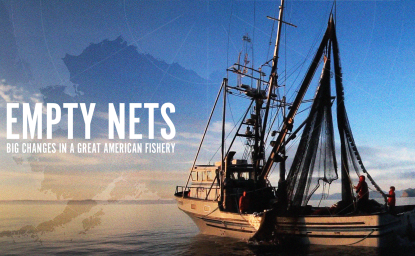
Empty Nets: Big Changes in a Great American Fishery
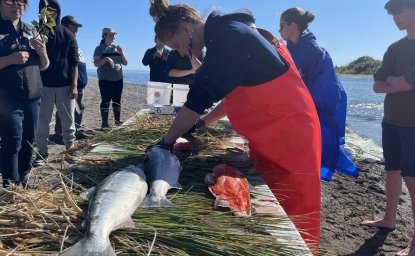
A Personal Account of Well-being and Salmon Systems
